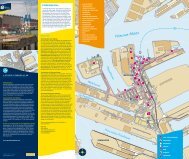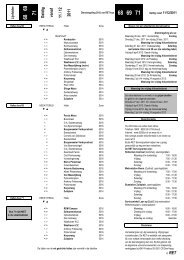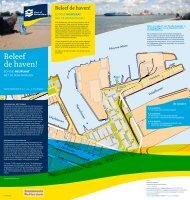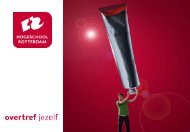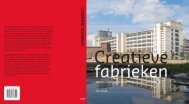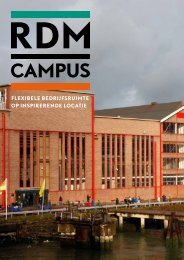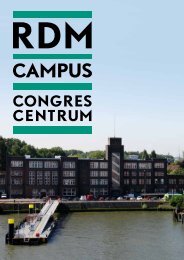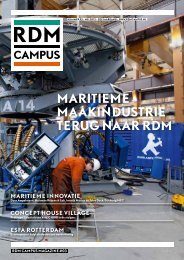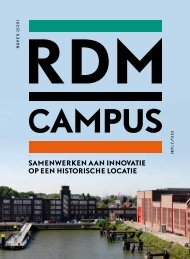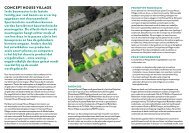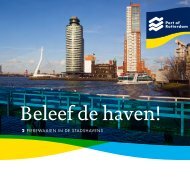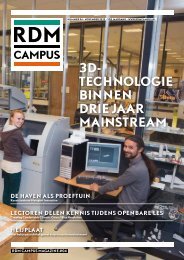Creating Comfortable Climatic Cities - RDM Campus
Creating Comfortable Climatic Cities - RDM Campus
Creating Comfortable Climatic Cities - RDM Campus
You also want an ePaper? Increase the reach of your titles
YUMPU automatically turns print PDFs into web optimized ePapers that Google loves.
58 <strong>Creating</strong> <strong>Comfortable</strong> <strong>Climatic</strong> <strong>Cities</strong>59<strong>Creating</strong> <strong>Comfortable</strong> <strong>Climatic</strong> <strong>Cities</strong>The houses will be showcases for the latest technological applications in sustainableenergy, water, sanitation and intelligent homes (home automation) on both buildingand district levels. In addition, Concept House Village will facilitate the developmentand testing of innovations in public spaces and the surrounding infrastructure.Practical tests will take place while students and Heijplaat villagers are living inthe houses.Practical researchConcept House Village offers research opportunities for:1) Innovations in the built environment: innovative prototype housing, constructionelements, techniques and sustainable materials, new applications for publicspace, process innovation and forms of collaboration;2) Sustainable behaviour in the built environment;3) The effect of the building process on current and future users (residents), clientsand other stakeholders.Image 14.Concept House Village, Rotterdam Heijplaat [Rutger Wirtz, 2009]Most retrofit projects in the Netherlands focus on reducing energy demand throughinsulation and making the installations more efficient. Heating, and in some casescooling, is always achieved mechanically. Biobased Retrofit explores the potentialsfor reducing the energy demand by adapting the form and interior configuration ofthe building in relation to the microclimate, thereby optimising the use of passivesystems and minimising the dependency on heavy installations. Energy performance,resource efficiency, comfort, interior quality, logistics, upscalability, costs and user cocreationwill be the drivers of the research and design. The effects of climate changewill be taken into account, resulting in a retrofit strategy that will be able to deal withincreased cooling demands in the future.The design and research will focus on adapting the envelope and interior of thebuilding. The use of interstitial (climate) zones and the reconfiguration and dynamictemporal use of the interior as strategies will be explored in relation to environmentalperformance, comfort and user experience. The smart positioning and designof openings and (active) shading devices in relation to the movement of the sun,prevailing winds, vegetation, water and views will be parametrically brought intoalignment with performance and comfort aspects such as energy and materialperformance, thermal, hygrothermal, visual and acoustic comfort.Figure 17.Biobased Retrofit [Doepel Strijkers, 2012]Two prototype housesBiobased RetrofitThe Biobased Retrofit pilot explores the potentials of bioclimatic passive principles incombination with smart innovations for affordable energy neutral renovation of theexisting housing stock (see Figure 17). In collaboration with Woonbron, Hunter Douglas,Pantanova, Studio Bouwhaven, ICDUBO, DGMR and Doepel Strijkers, the RotterdamAcademy of Architecture and the research chair for Sustainable Architecture andUrban (Re)Design will explore the possibilities for retrofitting six social rented housesin Concept House Village.The potentials of biobased materials will be explored along with their environmentalimpacts and effect on interior comfort. The use of biobased materials in retrofittinghas not yet taken off in the Netherlands. Many people have negative ‘eco’ associationswith biobased materials due to their natural ‘ecological’ appearance. As this may bean obstacle to the large-scale application of renewable materials, it is imperative thatinnovative examples that demonstrate the diverse possibilities of these materials aredeveloped. Besides the energy reductions that can be achieved through smart (re)design of the envelope, integrated energy production on location will also form part



